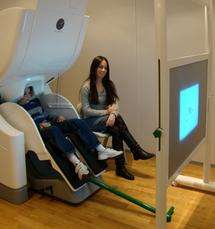Study uses brain scans to discover how children 'read' faces

(PhysOrg.com) -- Oxford University scientists are using brain-scanning technology to understand how we learn to recognise and 'read' faces as children.
The research will also investigate whether there are any differences in the way people with autism spectrum disorders respond to seeing faces.
‘Faces are really very similar in their basic features, but we are very good at recognising different faces instantly. The brain has to be very specialised to be able to do this quickly and accurately,’ says Dr Jennifer Swettenham, who is leading the study.
The ability to recognise faces is very important for communication and socialising. We need to be able to recognise people’s facial features, and also understand their emotions, respond to where they are looking, and many other signs and indications.
‘If there’s a problem with the way the brain processes faces then this can have profound impact on people’s ability to understand social situations,’ says Dr Swettenham. ‘There is a lot of evidence to suggest that people with autism spectrum disorder have difficulty with processing faces.’
Psychologists in the Oxford Autism Research Group are using a technique called magnetoencephalography (MEG) to map brain activity in children of different ages when they are shown photos of different things. The researchers aim to discover when our brains become specialised to ‘see’ faces. They will also compare children with and without autism spectrum disorder (ASD) to see if the development of these brain responses is affected by ASD.
Magnetoencephalography (MEG) is a non-invasive technique that uses sensors to record magnetic activity produced by active nerve cells, or neurons, in the brain. Children sit on a chair with their head surrounded by the sensors, but they are not in an enclosed space like MRI scans and MEG does not make a noise, unlike MRI.
‘We hope this research will help us understand more about autism spectrum disorder and about brain development,’ says Dr Swettenham.
The researchers aim to involve 96 children aged between 5 and 16, with and without autism spectrum disorder, in the study.
Provided by Oxford University (news : web)















